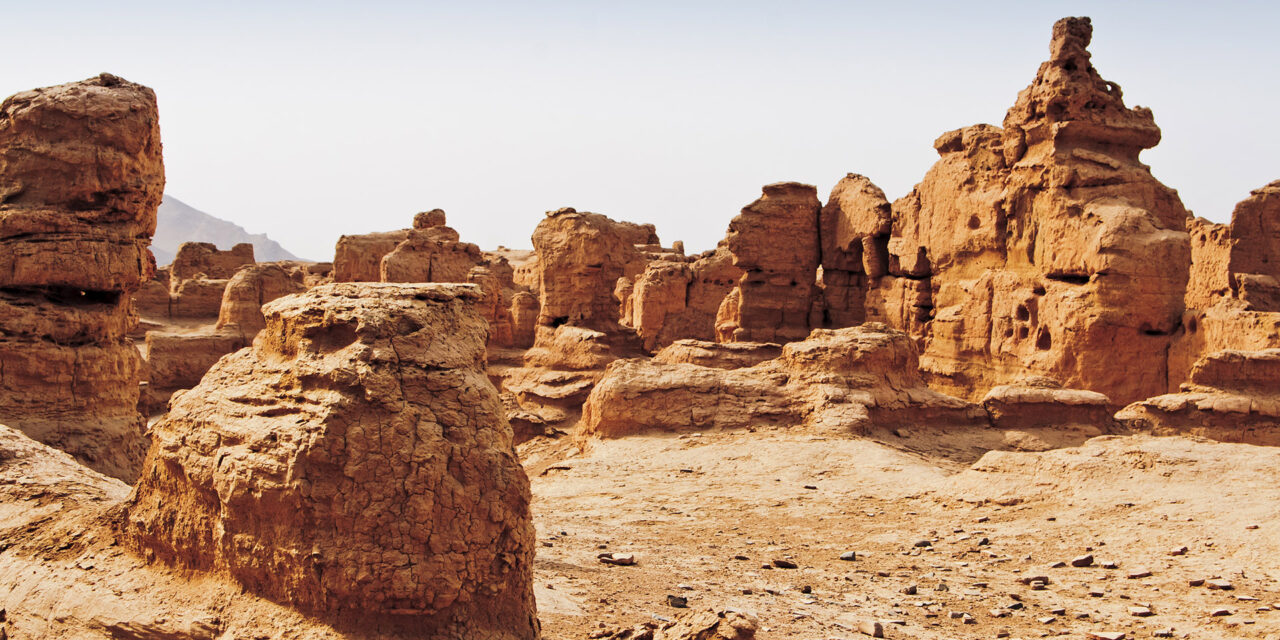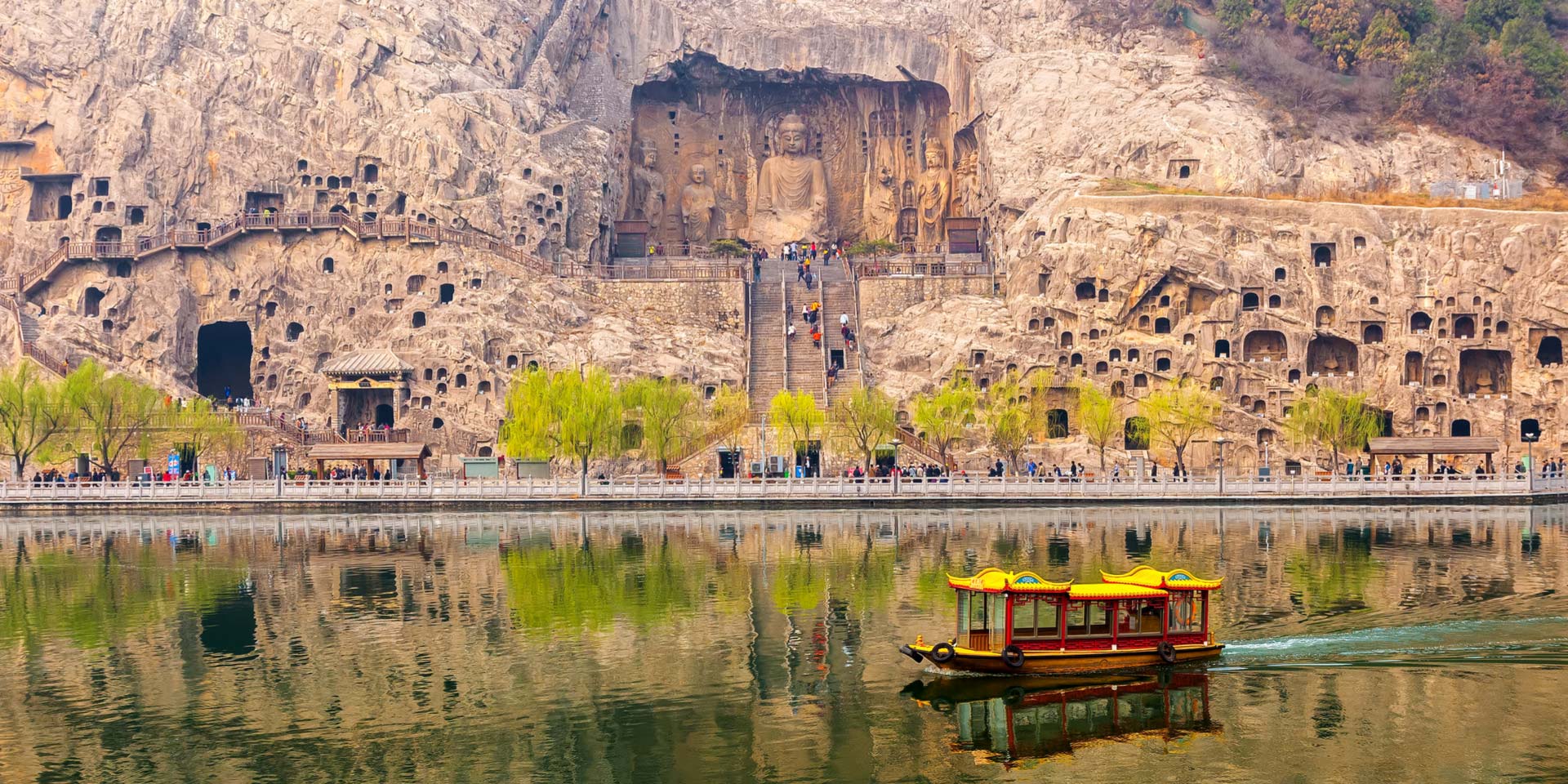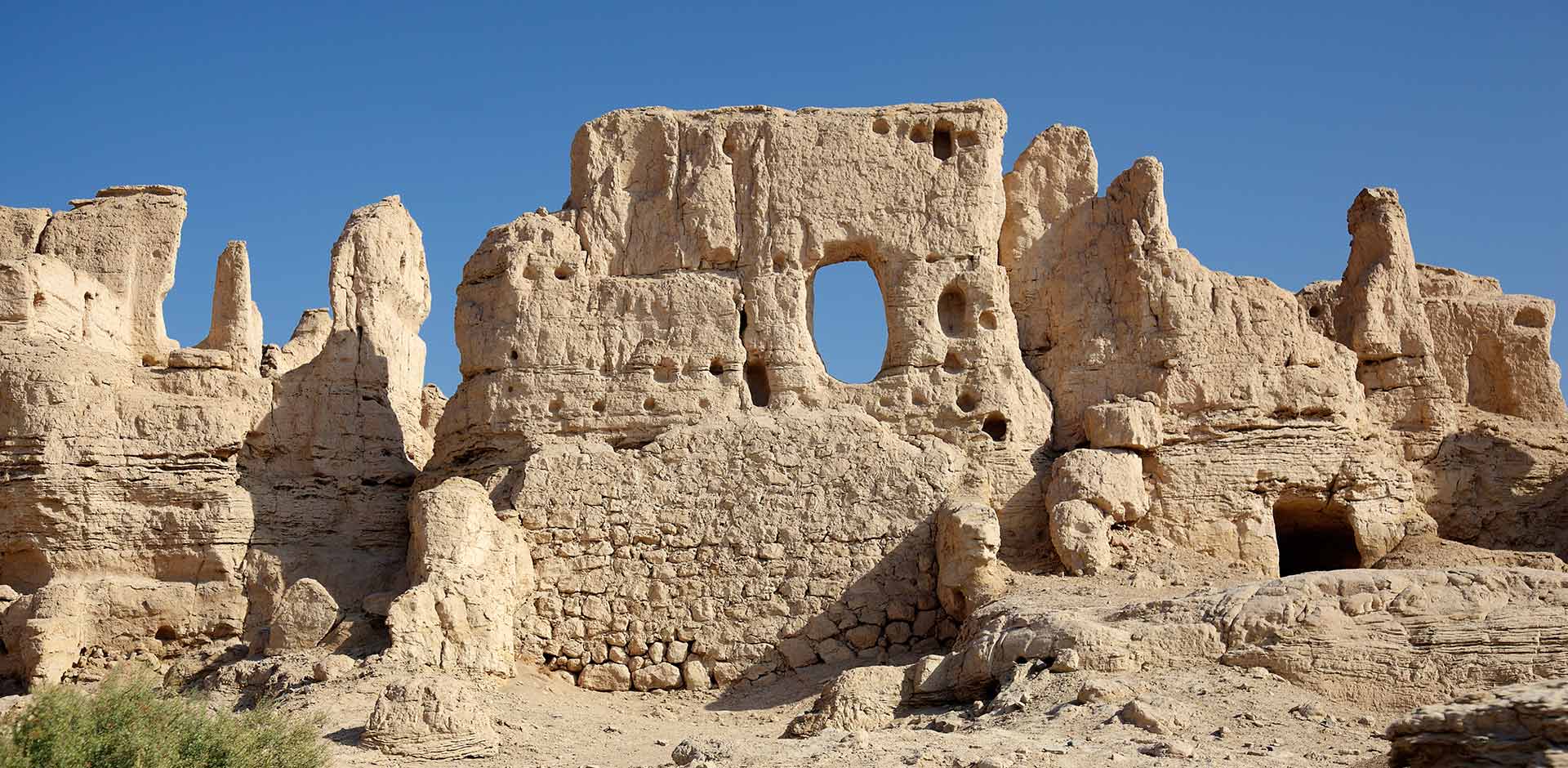There are many stops along the Silk Road. Few can boast a history as rich and a culture as remote as that of Turpan. Part of the current Xinjiang Autonomous Region in the People’s Republic of China, rule over this desert outpost has been traded from merchants to the Tang Dynasty and was once even an independent kingdom run by a Turkic tribe. The ruins, and even a few of the bodies, still remain in the historic oasis of Turpan – an important region for any Silk Road aficionado.
Flaming Mountains
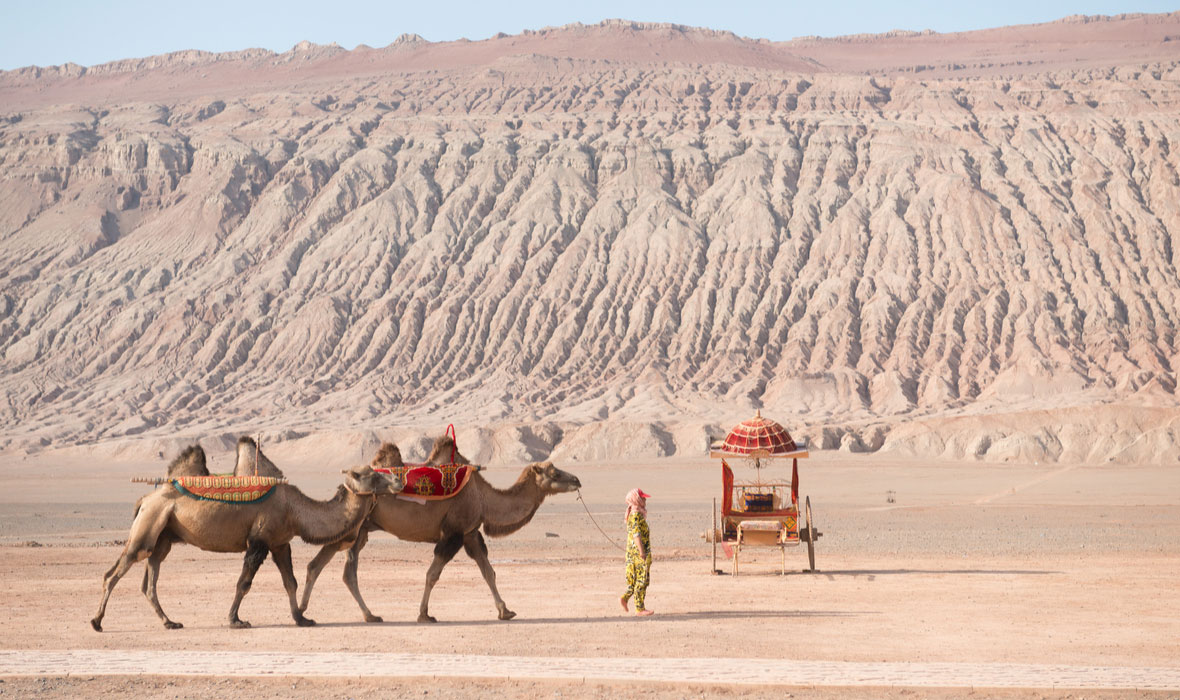
Turpan and the surrounding regions are something of a gold mine for archeological enthusiasts, and the stunning desert landscapes typical of the region are not to be overlooked – especially the Flaming Mountains. Near the northern rim of the Taklamakan Desert, the erosion-induced gullies and trenches that give way to red sandstone bedrock are striking and their color and shape give them the supposed appearance of flames.
That said, for the more romantically inclined, there are charming myths that detail how the mountains took on their unique traits. According to the Chinese classic Journey to the West, the Monkey King knocked over a kiln in the heavens that rained down embers onto the Tianshan Mountains.
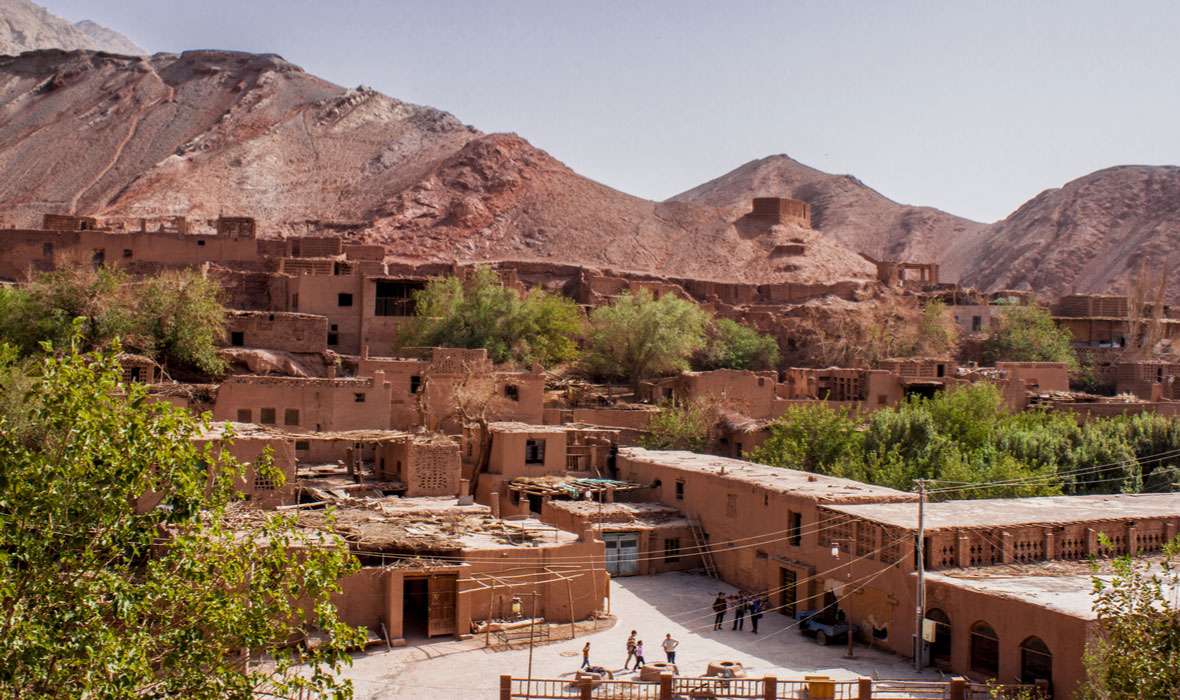
ABOVE: Villages under the Flaming Mountains.
From another perspective, Uygur legend contends that a local hero slew a dragon whose blood produced the scarlet coloration along the mountains. Whatever the case may be, the mountains are beautiful and worth a visit.
Astana Tombs

ABOVE: Entrance to an underground cemetery complex containing more than 1,000 tombs.
The city of Gaochang flourished roughly two millennia ago. Initially a garrison town along the Silk Road in the first century BCE, it grew into a major city that brought order to the surrounding region and contained opulent riches within its walls.
A short distance away from the city’s ruins lie its tombs. Predominately containing bodies of Chinese settlers of Gaochang between the 4th and 8th century, the underground cemetery complex contains 1,000 tombs, more than 500 of which have been successfully excavated.

ABOVE: One of the many Turpan mummies.
The bodies were buried with goods ranging from foodstuffs to carriages and various other luxurious items to accompany them into the afterlife, and, thanks to the region’s arid climate, many of these telling archeological objects have been wonderfully preserved. This includes the bodies, many of which are considered to be mummies.
Of the more than ten thousand cultural relics that have been excavated from the site, some of the more curious are gold coins placed over the eyes of the deceased. Often Byzantine or replica-Byzantine in make, these coins demonstrate clear parallels with Greek burial customs and seem to indicate a clear blending of Western and Eastern culture – long before planes and the internet.
Jiaohe Ruins

ABOVE: Jiaohe Ruins just outside Turpan.
A short distance away from modern day Turpan lie the Jiaohe Ruins. Bordered by two small rivers and perched atop a large plateau, this important city along the Silk Road lacked the city walls typical of other contemporary cities because they were not needed. The plateau’s steep cliffs that are more than 100 feet high on all sides acted as natural defenses. The natural fortress served as the capital of the Anterior Jushi Kingdom from 108 BCE to 450 CE, and it was later absorbed into the Tang Dynasty (618-907) as the seat of the newly established Jiaohe County.

ABOVE: Jiaohe is more than 2,000 years old.
Buddhist temples and stupas were abundant in the north of the city, and Tang records indicate it had a population of 7,000, but the powerful fortress city eventually succumbed to the might of Genghis Khan and his Mongol army in the 13th Century. Due to the city’s heavy usage of earthen materials as opposed to wood, it has been miraculously preserved despite having been abandoned for hundreds of years. Featuring a mixture of local architecture combined with distinctively Tang aesthetics, this key node along the Silk Road is certain to interest archeological buffs – and it might just produce new ones.
Emin Minaret

ABOVE: The Emin Minaret is the tallest minaret in China.
If you’re interested in a more modern but still ancient site, the Emin Minaret should do the trick. Standing adjacent to a Uyghur mosque within the arid landscape of southern Xinjiang, the minaret was constructed in honor of the Turpan general Emin Khoja (1694 – 1777 CE). Completed in 1778, it remains the tallest minaret in China at 144 feet.

ABOVE: Details of geometrical and floral patterns of Emin Minaret.
The elegant, tapered Islamic dome is composed of wood and brick and features intricate geometric and floral mosaic patterns. These patterns constitute a blending of Chinese and Islamic artistic motifs, producing a unique combination of the two cultures. The Silk Road was about a sharing of ideas, a bridging of East and West, and the exchange of magnificent displays of material grandeur. In that respect, the Emin Minaret is a physical embodiment of the Silk Road’s spirit.
Turpan Wine

ABOVE: Local checking on grape vines.
It was historically contended that vines and advanced irrigation techniques were brought to Xinjiang in the 4th century CE by Greek settlers along the Silk Road, but recent archeological evidence has suggested that grape wine was produced in the region as early as 7000 BCE. Whatever the case, wine has been in Xinjiang for a long time; even Marco Polo noted its existence here.
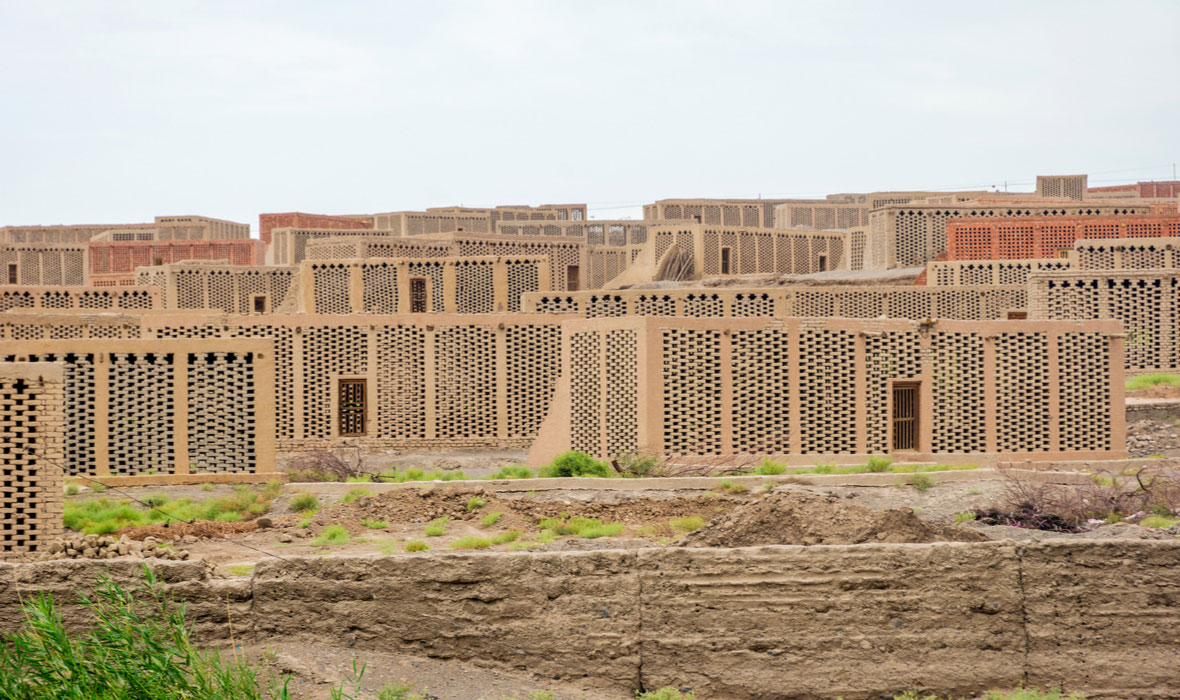
ABOVE: Unique wine cellars in Turpan.
The handful of expansive, Uygur-run wineries around Turpan predominately produce cabernet sauvignons, though merlot and chardonnay are also available. The young vineyards contain sensational wine cellars that draw on traditional, regional architecture and are also worth a look. In terms of the wine itself, the quality is good, and while it lacks the complexity of more mature wine-producing regions, experts have indicated that the vineyards near Turpan show promise.
With increased investment into the Chinese wine market, quality is increasing as rapidly as high-speed railway tracks are being laid, and perhaps one day it will be able to compete with household regions. For the moment, though, the vineyards provide a nice break from this archeologically heavy tourist destination, and a glass of wine in a scenic vineyard is never something to refuse.


